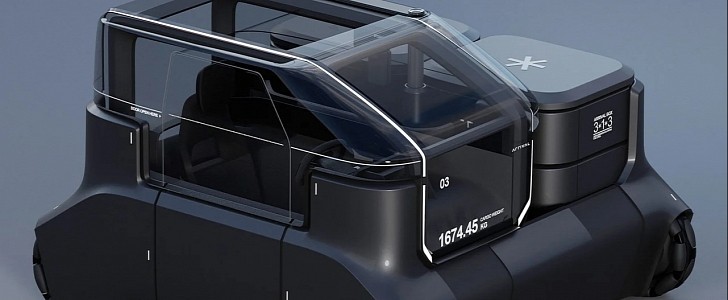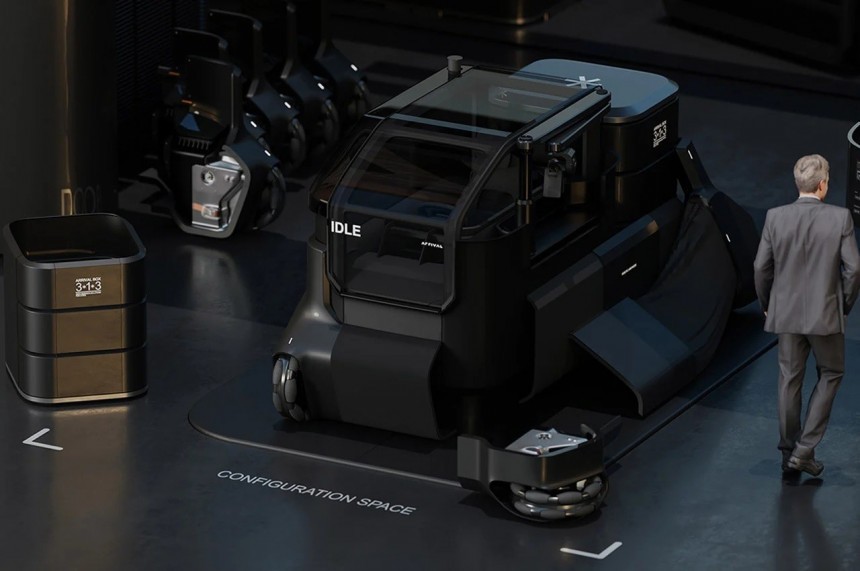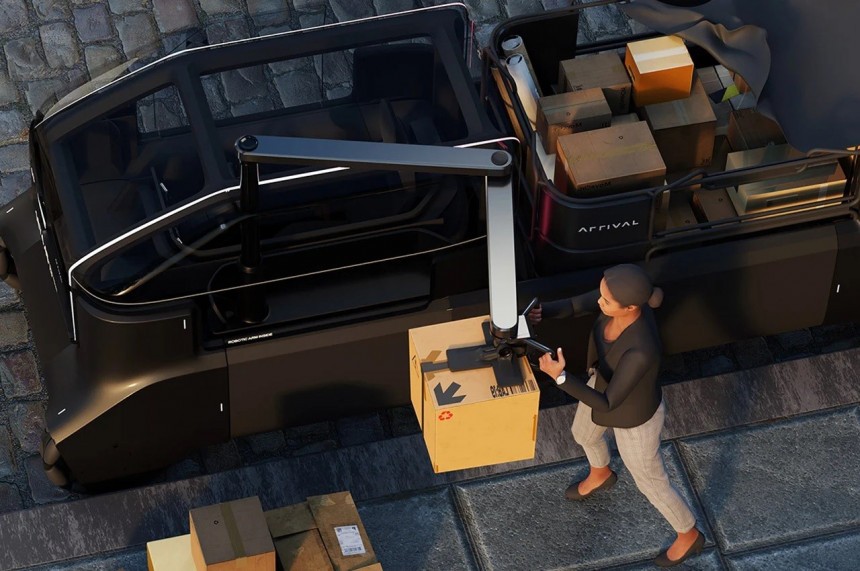We’ve seen and discussed our fair share of concept vehicles here at autoevolution, but not many were targeted at businesses in need of a versatile utility vehicle to haul passengers, equipment, or supplies from one place to another, especially in locations where the use of a truck or van is inefficient or impossible.
Two London-based independent designers have come up with an ingenious conceptual vehicle meant to fill that gap in the automotive industry. They designed an ultra-customizable electric vehicle that can go from a passenger hauler to delivery car to cargo carrier, depending on the user’s needs.
Mingwei Liu and Benjamin Miller are the masterminds behind this project, dubbed Arrival ANT, designed to revolutionize mobility and transportation in large and growing metropolitan areas across the world that face heavy traffic daily.
Most similar customizable vehicles can convert from a passenger hauler to a cargo carrier, but the possibilities end here. Arrival ANT takes things even further by offering “scalable and flexible solutions on a more granular level.” What this means is that the Arrival ANT can change its structure based on the user’s needs with the help of attachable modules that can be hooked onto the vehicle on demand.
This modern electric vehicle concept starts small and ends up big thanks to these attachable modules. Imposingly big, we could say. It could be a passenger hauler today, and tomorrow it could turn into a heavy load carrier and be ready to prove its agility and functionality.
“We focused on the utility side of vehicles and the needs of shopkeepers, restaurateurs, delivery services, movers, contractors, entrepreneurs, vendors and alike for our opportunities. It is these services that are the lifeblood of a city and give each neighbourhood its flavour and function,” the designers say. “These people have business demands linked to their objects of work (or delivery goods) and the variety of scale can be vast.”
Those in need of a utility vehicle are usually conflicted between buying a truck or a van, but with ANT, they won’t have to worry about it, as the EV can morph shape to perform different tasks, and it can add to its utility by three folds or even more.
This is made possible with some simple base panels and some building blocks that can be attached in various combinations. According to the designers, the possibilities are endless, and the attachable modules can be easily and seamlessly retrofitted at mini-factories on demand. Extra corners, panels, and internal modules can be stored at these locations, and could also be rented for specific jobs.
The corner units are the focal point of this contraption. These units are placed over the wheels delivering torque depending on the load. Users will be able to connect the internal cargo modules based on their needs and thus create the vehicle's underlying structure.
“Need to pick up another passenger one day, add another seat. Need just a small cargo solution, add a small box. Need Ant to do autonomous deliveries, remove the cabin and set it free. Need Ant to move your whole kiosk, it can do that too.” This is how Liu and Miller describe the concept’s versatility.
Since London is the designers’ place of residence, they envisioned the EV concept as a solution to alleviate congestion and traffic in the dense urban scene of the British capital city. Due to its versatility, Arrival ANT can be taken both on the narrow back streets in the heart of the city where it would carry out quiet delivery tasks and on the high streets if hauling heavy loads is what the owner desires.
It could also serve as a smart mobility solution for large families and co-workers to get from point A to point B. For now, though, it’s just a concept but helps us envision what the future of mobility could look like.
Mingwei Liu and Benjamin Miller are the masterminds behind this project, dubbed Arrival ANT, designed to revolutionize mobility and transportation in large and growing metropolitan areas across the world that face heavy traffic daily.
Most similar customizable vehicles can convert from a passenger hauler to a cargo carrier, but the possibilities end here. Arrival ANT takes things even further by offering “scalable and flexible solutions on a more granular level.” What this means is that the Arrival ANT can change its structure based on the user’s needs with the help of attachable modules that can be hooked onto the vehicle on demand.
This modern electric vehicle concept starts small and ends up big thanks to these attachable modules. Imposingly big, we could say. It could be a passenger hauler today, and tomorrow it could turn into a heavy load carrier and be ready to prove its agility and functionality.
Those in need of a utility vehicle are usually conflicted between buying a truck or a van, but with ANT, they won’t have to worry about it, as the EV can morph shape to perform different tasks, and it can add to its utility by three folds or even more.
This is made possible with some simple base panels and some building blocks that can be attached in various combinations. According to the designers, the possibilities are endless, and the attachable modules can be easily and seamlessly retrofitted at mini-factories on demand. Extra corners, panels, and internal modules can be stored at these locations, and could also be rented for specific jobs.
The corner units are the focal point of this contraption. These units are placed over the wheels delivering torque depending on the load. Users will be able to connect the internal cargo modules based on their needs and thus create the vehicle's underlying structure.
Since London is the designers’ place of residence, they envisioned the EV concept as a solution to alleviate congestion and traffic in the dense urban scene of the British capital city. Due to its versatility, Arrival ANT can be taken both on the narrow back streets in the heart of the city where it would carry out quiet delivery tasks and on the high streets if hauling heavy loads is what the owner desires.
It could also serve as a smart mobility solution for large families and co-workers to get from point A to point B. For now, though, it’s just a concept but helps us envision what the future of mobility could look like.










